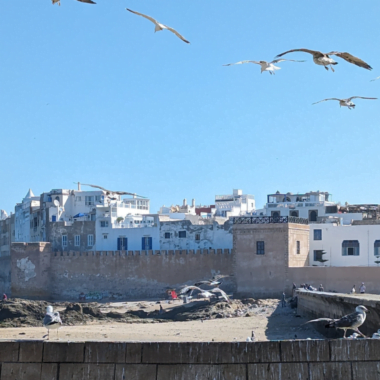With numerous iconic historical sites, Essaouira offers no sight shortage! However, the true delight lies in getting lost amidst its labyrinthine narrow alleys, discovering vibrant markets, and encountering artisans who are as enchanting as they are hospitable.
Let us craft a tailor-made journey, perfectly suited to your expectations and budget.
Reach out to us today at hello@nanoo.travel for your personalised quote.
Explore the enchanting city of Essaouira
The Medina
As a UNESCO World Heritage site, Essaouira’s medina, also known as the “old city” or “old citadel,” showcases a distinctive Portuguese-Moorish architectural style. It boasts magnificent white stone ramparts and monumental gates, including the renowned “Bab Marrakech” and “Bab Doukkala.” The medina comprises various neighborhoods, all established between the 18th and 19th centuries. The oldest of these, the kasbah, is a fortified district where dignitaries resided before the construction of the mellah in 1807.

The medina is a true labyrinth of narrow and winding alleys, bringing together various souks, artisan shops, art galleries, and numerous traditional restaurants and cafes where one can indulge in local specialties.

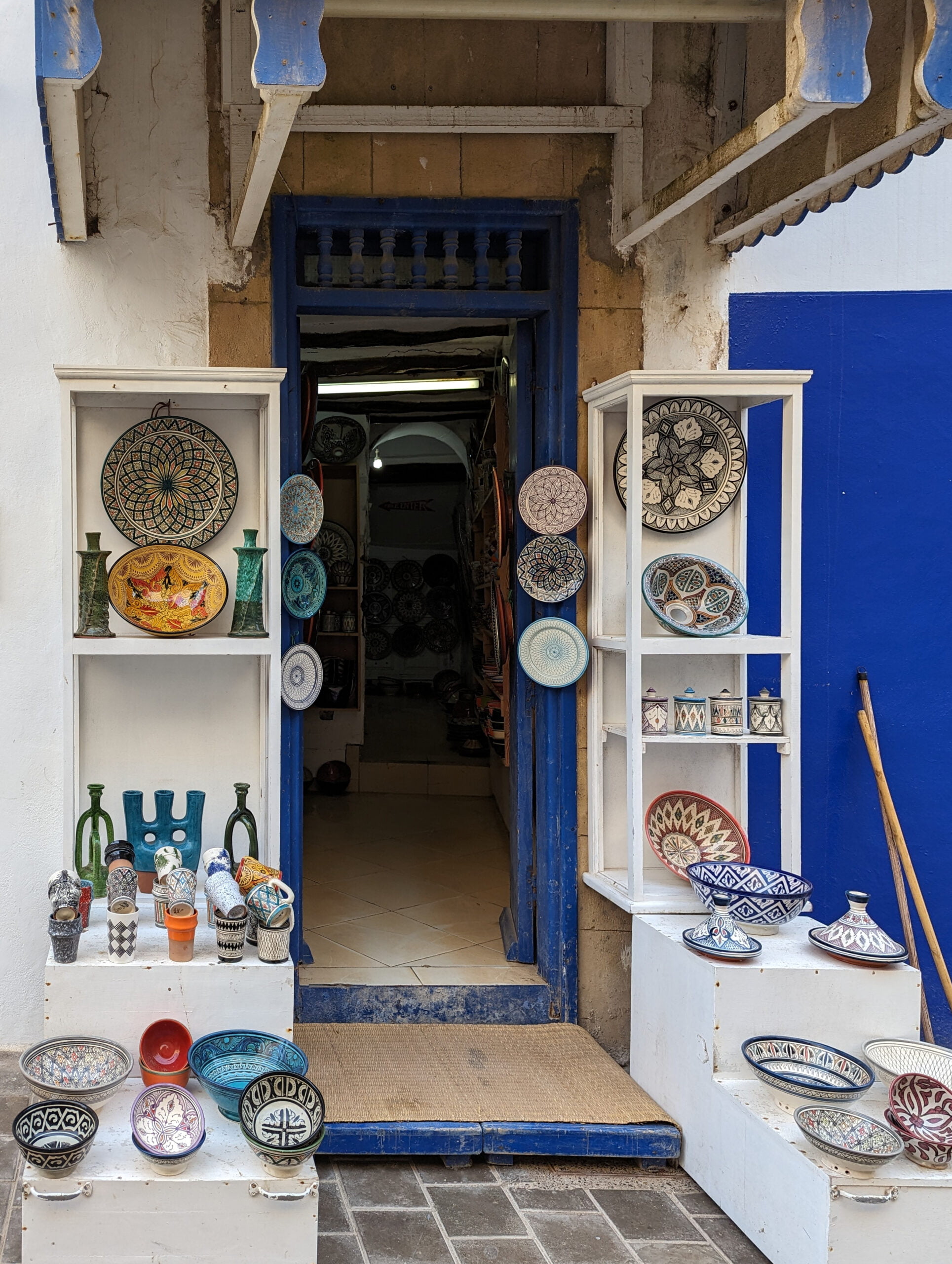

The souks
Strolling through the narrow alleys of the medina is immersing oneself in the vibrant local life and taking the time to discover the marvels of Moroccan craftsmanship. Rugs, jewelry, pottery, lanterns, fabrics, and other decorative objects… Everything is available for sale, and haggling is the name of the game in Essaouira’s bustling markets! 😅






While the experience of navigating bustling souks in major cities like Marrakech can sometimes feel overwhelming, getting lost in the souks of Essaouira is truly delightful. With a smaller size, these souks are easily explored on foot. You can stroll through airy alleyways without being incessantly approached by persistent vendors. The atmosphere is relaxed, friendly, and sometimes even festive when the souks come alive with street musicians.





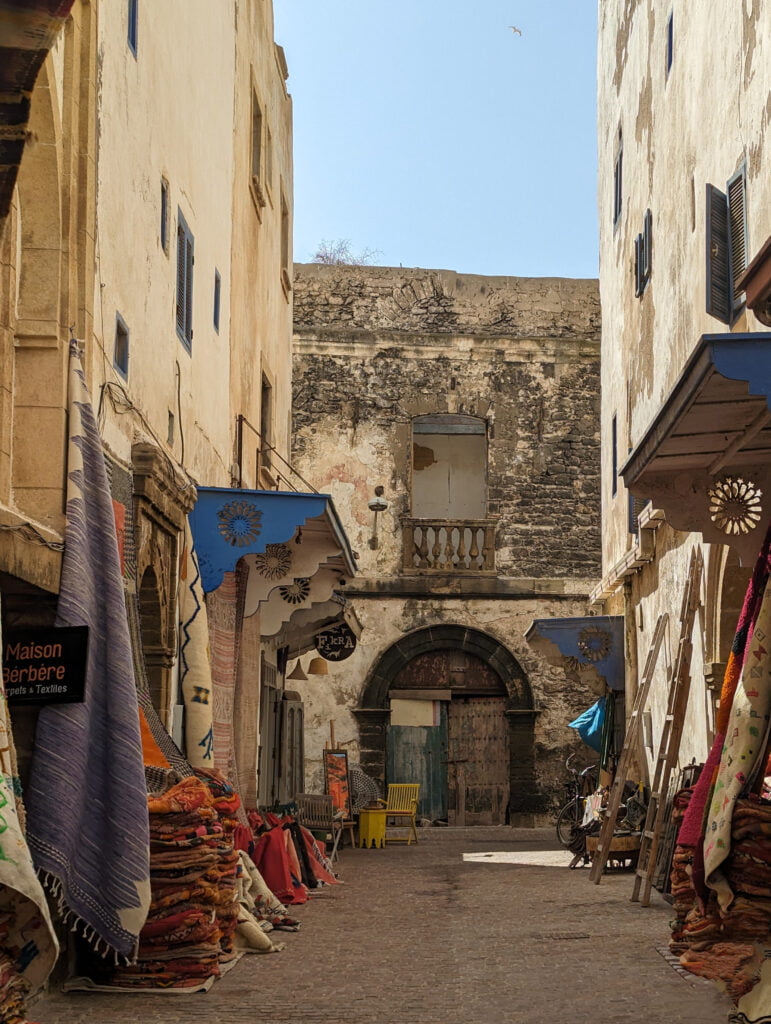
➜ According to a local’s advice, any negotiation should start at half price; otherwise, the final purchase price will be too high. From personal experience, this tip proves effective in most cases. We have encountered identical rugs with prices ranging from half to double before negotiation, providing room to negotiate from the higher end. However, there are instances where the price announced is non-negotiable or only slightly flexible, such as at certain pottery merchants. In any case, it is advisable to thoroughly explore the markets before making a purchase decision 🙈
The skala of the medina
The skala of the medina, also known as the skala of the kasbah, is a fortified platform built in the 18th century. It forms part of the city’s fortifications, designed by the French architect Théodore Cornut during the reign of Sultan Mohammed III. These fortifications were created to protect the city from external attacks.
The impressive Vauban-style skala stretches across several hundred meters and is built exclusively with finely crafted cut stones. It is adorned with several Spanish cannons that testify to the city’s military history. The skala is magnificently overseen by the northern borj, the city’s most significant bastion.




A must-visit historical site, located just a few minutes walk from Place Moulay Hassan, the skala offers a stunning panoramic view of the Atlantic Ocean and the medina’s ramparts. It is an incredibly popular spot to witness the mesmerizing sunset, making it an irresistible destination.

The fishing harbor
Built in 1770 during the reign of Sultan Mohammed ben Abdallah, the port of Essaouira is safeguarded by the fortified skala of the port. With its Manueline style, the skala of the port comprises two 200-meter fortified wings connected to Bab el-Marsa (the marine gate) and overlooked by the Borj el-Barmil.

Also known as the Port Bastion, the Borj el-Barmil is a circular fortress in the Vauban style. It was built to defend the northern entrance of the bay, with Borj Moulay Ben Nasser on the opposite side, located on Mogador Island. Made entirely of cut stone, Bab el-Marsa is a front-gabled doorway adorned with fluted columns. Serving as the entry point to the port of Essaouira, it stands as the city’s most monumental gateway.



For a long time, Essaouira port was called “Tombouctou’s port“, serving as a pivotal hub connecting trans-Saharan trade routes and major maritime routes to Europe and the Americas. From the late 18th century to the end of the 19th century, it stood as Morocco’s prime international trading port.
Due to its lack of deep waters, the port cannot accommodate large modern vessels with high draught, leading them to choose newly constructed ports in Casablanca, Tangier, and Agadir instead. Once a shipyard for constructing warships, the port of Essaouira has now become the third-largest sardine fishing port in the kingdom and an important shipyard for building and repairing traditional boats.

The port of Essaouira lies at the heart of local maritime activity, bustling with the life of fishermen. One can observe them in full swing, unloading the day’s catch, mending nets, and preparing their boats for the next expedition at sea. During the auction, the fishermen sell their catches to local merchants and restaurateurs, creating a lively atmosphere.

➜ Along the harbour, multiple stalls allow visitors to select their desired pieces and relish them on-site. As long as one negotiates the price of the fish and the cooking method before placing an order, dining near the port generally proves more economical than in restaurants.
Activities near Essaouira
Strolling along the shores of Diabat Beach
Located approximately 4 kilometers south of Essaouira, Diabat Beach is a stunning expanse of golden sand. Visitors revere it for its pristine natural beauty, serene atmosphere, and enchanting view of the nearby Mogador Island.



Compared to Tagharte, the main beach of Essaouira, Diabat Beach generally receives fewer visitors, making it a serene and less touristy spot for a stroll.

Diabat Beach is an ideal spot for indulging in thrilling water sports. Moreover, it is renowned for delightful horseback rides and camel trekking adventures.




Nestled among the dunes, to the left before reaching Diabat Beach, lie the ruins of Dar Es-Sultan. This palace was once built by a wealthy trader for the Sultan Sidi Mohammed Ben Abdallah and later became the residence of Moulay Abderrahmane, the King’s Khalifa in Mogador.

Mogador Golf Course
Located just minutes from Essaouira, next to Sofitel, Mogador Golf Course is renowned for its two world-class golf courses designed by the celebrated golf architect Gary Player.
The complex sprawls across a 580-hectare estate, providing a unique experience amidst the dunes and argan tree forests facing the Atlantic Ocean. With its 18-hole North course and 13-hole South course, Golf World Magazine recognized Mogador Golf Course as one of the 20 most thrilling new courses worldwide in 2010.

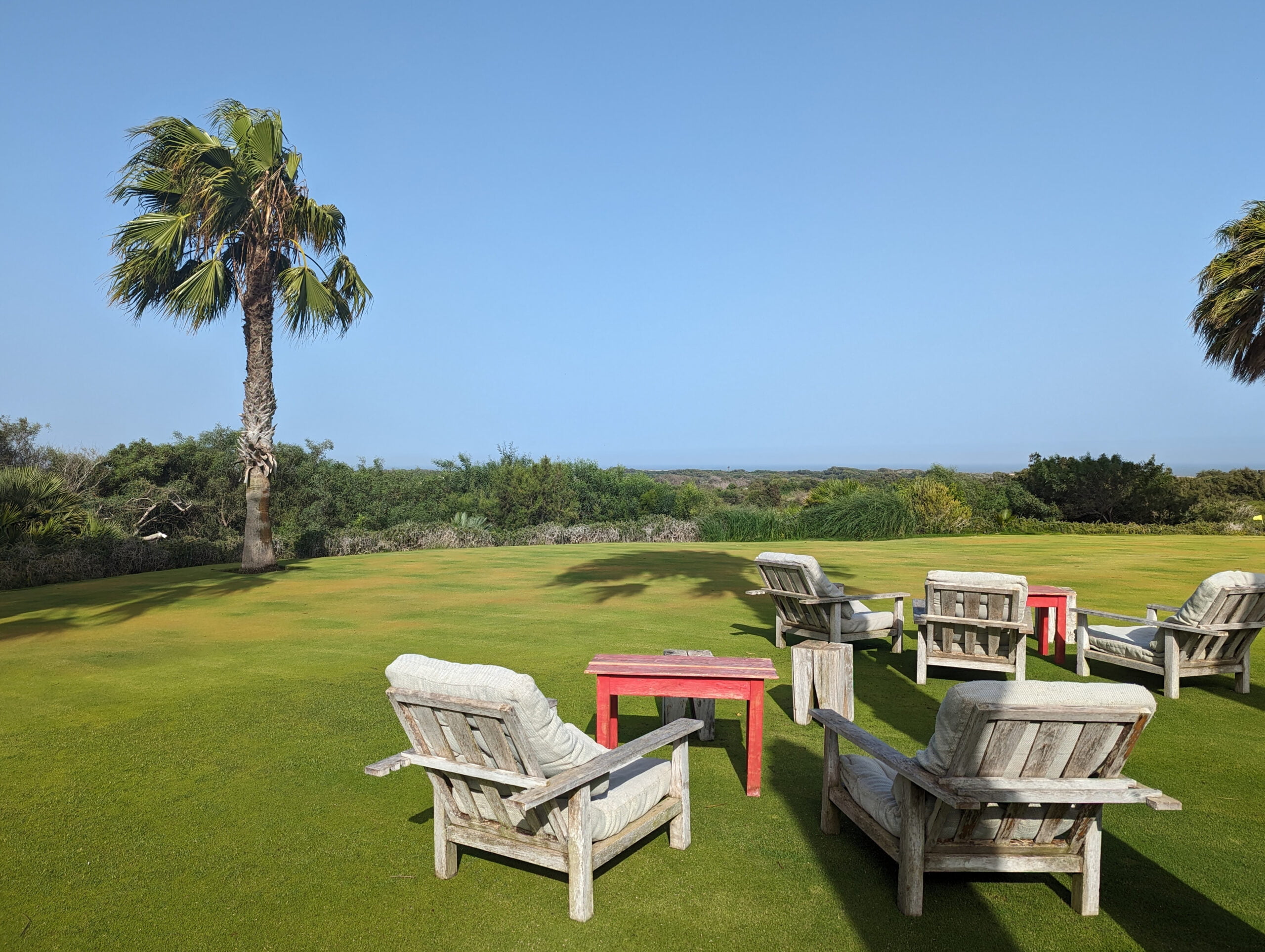
➜ The complex boasts a modern and elegant clubhouse and a terrace restaurant that offers panoramic views of the course and the ocean. The cuisine is diverse and reasonably priced. Every day, a two-course menu is available for 240 Dhs.
Surfing at Sidi Kaouki
Located approximately 25 kilometers south of Essaouira, Sidi Kaouki is a charming coastal village along the Atlantic coast. Immersed in untouched nature, with its dunes, rocky hills, and wild vegetation, this idyllic spot is a haven for travelers seeking tranquility. Stretching for several kilometers, its beautiful beach of golden sand beckons visitors to indulge in strolls and relaxation.

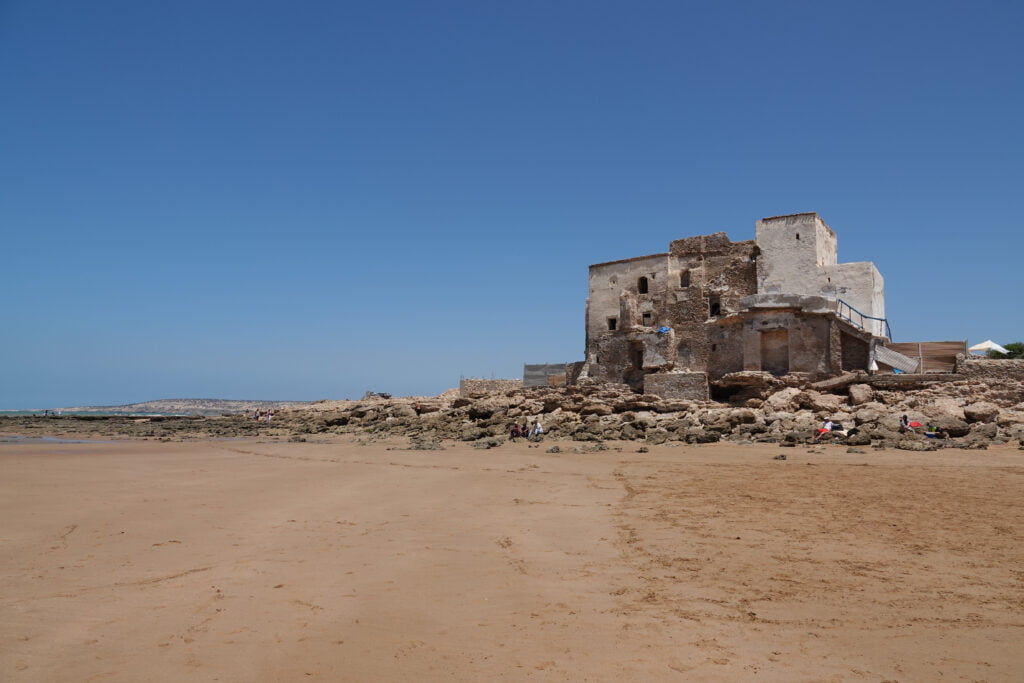


Known for its gentle and consistent waves, Sidi Kaouki Beach is a popular destination among surfers of all levels and kiteboarding and windsurfing enthusiasts. Numerous surf schools offer lessons and equipment rentals, with group lessons priced at 250 Dhs per person for a two-hour session, including equipment rental.

➜ We chose Surf Twins for their professionalism and infectious positive energy 🥳 In just one session, all beginners got up on the board. It was a truly fantastic experience!
Sidi M’barek Waterfalls
Located 12 kilometers south of Sidi Kaouki, on the coastal road leading to Agadir, the Sidi M’barek waterfalls offer a splendid opportunity for a stroll. Thanks to its natural abundance, this site has long served as a resting place for caravans of camels making their way to the port of Essaouira. Laden with goods bound for Europe, these caravans would halt here, finding respite in the mesmerizing beauty of these cascades.
Sidi M’barek waterfalls, born from significant water erosion of the Oued Aghbalou, are a hidden gem, largely unknown to tourists. Accessible via a rugged trail marked by white stones, discreetly indicated by a sign along the road.


The descent to the waterfalls takes place amidst the Oued Aghbalou, nestled amid towering dunes and layered geological rocks.


A gentle water flow from an upstream source consistently feeds the cascades throughout the year. However, during summer, the water becomes scarce. Nonetheless, the breathtaking landscapes and views of the ocean remain unparalleled.

Strolling along the deserted beach is an incredibly enjoyable experience.

Let us craft a tailor-made journey, perfectly suited to your expectations and budget.
Reach out to us today at hello@nanoo.travel for your personalised quote.






